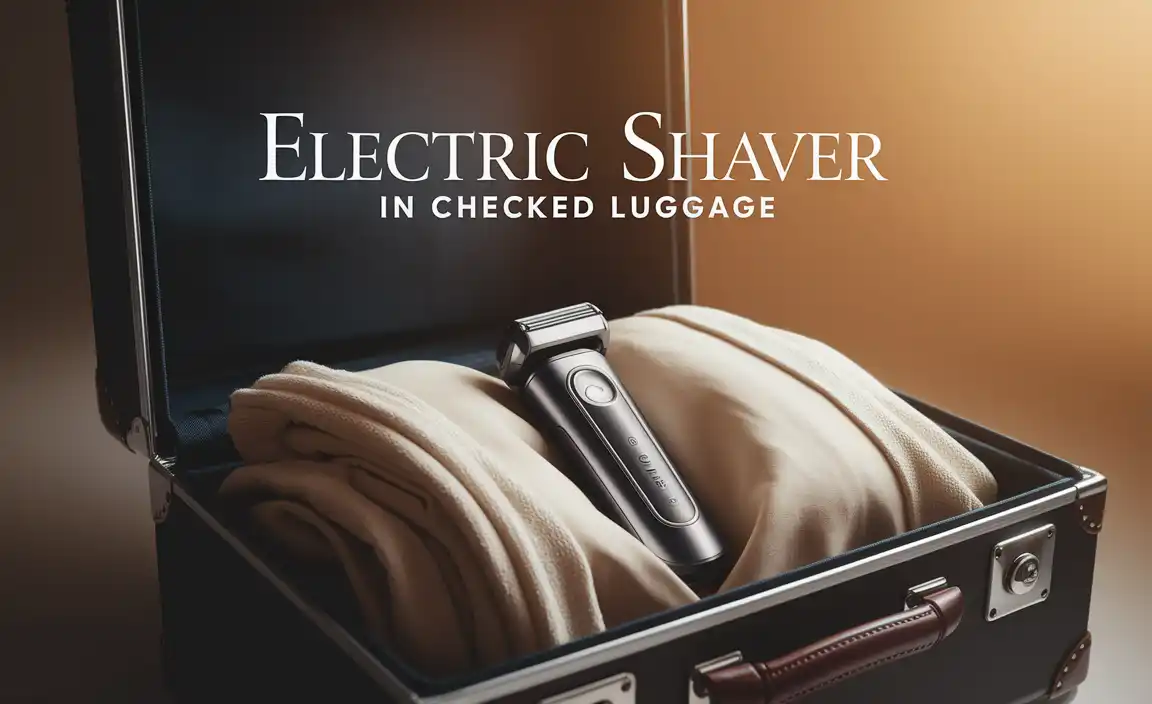Your Belize Accessible Travel Guide: Unlocking a Barrier-Free Caribbean Paradise
Planning an accessible trip to Belize doesn’t have to be complicated. This guide provides realistic, simple steps to enjoy Belize’s stunning natural beauty, vibrant culture, and warm hospitality, focusing on comfort and ease for every traveler. We’ll cover everything from transportation and accommodation to activities and essential tips, ensuring your journey is smooth and memorable. Get ready to explore Belize with confidence!
Belize is a gem in Central America, known for its turquoise waters teeming with marine life and its lush rainforests whispering with ancient secrets. Many travelers dream of swimming with whale sharks, exploring Mayan ruins, or simply relaxing on pristine beaches. But for those who need a little extra support, planning can feel overwhelming. The good news is, Belize is becoming increasingly mindful of accessible tourism. With a bit of research and preparation, you can experience the magic of this incredible country without worry. This guide is designed to break down the planning process into easy, actionable steps, helping you create an unforgettable, stress-free adventure in Belize, no matter your mobility needs.
Why Accessible Travel Matters in Belize
Belize’s natural charm is its greatest asset. From the barrier reef to the jungle canopies, the experiences on offer are truly unique. However, historically, tourism infrastructure hasn’t always catered to travelers with disabilities. This can mean challenges navigating uneven terrain, finding suitable accommodations, or accessing tours and activities. Thankfully, there’s a growing awareness and effort to make Belize more inclusive. This shift benefits everyone, ensuring more people can enjoy the wonders Belize has to offer, fostering a richer and more diverse travel experience for all. Understanding these challenges and knowing what to look for is the first step to a successful and enjoyable trip.
Preparing for Your Accessible Belize Adventure
A little preparation goes a long way. Thinking ahead about your needs will make your trip smoother. It’s all about ensuring comfort and ease so you can focus on enjoying Belize!
Step 1: Research Accessible Stays
Finding the right place to stay is crucial. Look for hotels or lodges that explicitly state they offer accessible rooms or amenities.
What to look for:
Roll-in showers or walk-in tubs.
Grab bars in bathrooms.
Wider doorways.
Accessible ramps or elevators.
Proximity to attractions or transportation.
Where to start:
Check hotel websites directly for accessibility information. Many will have dedicated pages or icons.
Look for certifications or associations that promote accessible tourism.
Read reviews from other travelers with similar needs.
Contact hotels directly before booking. Ask specific questions about their facilities. Don’t hesitate to ask for photos or videos if possible.
Step 2: Accessible Transportation Options
Getting around Belize requires a bit of planning. While public transport can be limited, there are options for comfortable travel.
Airport Transfers: Many resorts can arrange accessible vans or taxis. Booking this in advance is highly recommended.
Taxis: In larger towns like Belize City, San Ignacio, and Placencia, you can find taxis. Not all will be accessible, so it’s best to ask about vehicle type when booking, perhaps through your hotel.
Rental Vehicles: Some companies may offer modified vehicles, but availability is scarce. Standard rental SUVs may offer more comfortable seating and higher clearance for some terrain.
Inter-district Travel: For longer distances such as between Belize City and the popular Cayo District (for inland adventures) or the coast, consider booking private transfers. Many tour operators can arrange these in accessible vehicles.
Step 3: Choosing Accessible Tours and Activities
Belize offers incredible experiences, and many can be adapted for accessibility.
What’s generally more accessible:
Boat tours: Many modern tour boats are designed with steps and railings, and some operators can assist with boarding. Snorkeling trips, especially to areas with gradual entry, can be manageable.
Visitor Centers at Mayan Ruins: Sites like Xunantunich have visitor centers and well-maintained paths in certain areas. Ask about accessible routes. The Belize Tourism Board often provides information on accessible sites.
Relaxing on Accessible Beaches: Areas like Placencia and Ambergris Caye have some beach access points that are easier to navigate. Resorts may offer beach wheelchairs.
Nature Walks: Shorter, paved paths in accessible nature reserves or around accessible lodges can offer a glimpse of Belize’s flora and fauna.
What might require more planning or assistance:
Caving: Most cave tours involve uneven terrain, crawling, and swimming.
Jungle trekking: Remote jungle adventures often mean challenging trails.
Ziplining and canopy tours: These typically require a certain level of physical mobility.
Pro Tip: Always contact tour operators in advance. Be clear about your needs and ask what accommodations they can make. A good operator will be honest about what’s possible.
Step 4: Packing Smart for Comfort and Confidence
Packing the right items can significantly enhance your comfort and peace of mind during your trip.
Essential Personal Care Items: Don’t forget any personal necessities you rely on. If you use adult or child diapers for comfort, extended travel, or health reasons, ensuring you have an adequate supply is paramount. Many travelers use discreet, absorbent options like Depend adult diapers or similar trusted brands to feel secure and dry throughout flights, excursions, and daily activities. Pre-planning your supply can prevent last-minute stress.
Mobility Aids: If you use a wheelchair, walker, or other mobility device, ensure it’s travel-friendly. Consider a lightweight, foldable option if possible. Inform your airline and accommodations about any devices you’ll be bringing.
Comfortable Clothing: Light, breathable fabrics are key in Belize’s tropical climate. Think loose-fitting cotton or linen.
Sun Protection: Sunscreen, hats, and sunglasses are essential.
Insect Repellent: Especially important for jungle excursions.
Medications: Bring more than you think you’ll need, along with copies of prescriptions.
Comfortable Footwear: Waterproof sandals and sturdy, closed-toe shoes are recommended.
Accessible Destinations Within Belize
Belize is a diverse country, and some areas are more developed for accessible tourism than others. Here’s a look at some popular regions and what they offer.
Ambergris Caye & Caye Caulker: Island Paradise
These popular islands offer a more developed tourism infrastructure, making them a good starting point.
Accessibility Highlights:
Many resorts on Ambergris Caye (especially San Pedro town) have accessible rooms and ramps.
Golf carts are the primary mode of transport, offering a relatively easy way to get around for many.
Some boat tours to the Belize Barrier Reef can be adapted to assist with boarding and provide floating vests. The surface of the water is generally calm for snorkeling.
Caye Caulker is flatter and more laid-back, with sandy paths that might be manageable for some with mobility aids, though a wheelchair can be challenging.
Considerations:
Much of the island is sand or gravel, which can be difficult for wheelchairs.
Some older establishments may not have modern accessibility features. Always inquire directly.
Placencia: The Charming Peninsula
Known for its beautiful beaches and relaxed atmosphere, Placencia is a good option for a coastal getaway.
Accessibility Highlights:
Several resorts and hotels along the peninsula are designed with accessibility in mind, offering ramps and accessible rooms.
The main “Sidewalk” through the village is paved and relatively flat, allowing for easier exploration on foot or with mobility aids.
Beach access can be good in many areas, and some places might offer beach wheelchairs.
Considerations:
While the main village is accessible, venturing onto the beach itself can be challenging due to soft sand.
San Ignacio & The Cayo District: Inland Adventures & Ancient Wonders
This region is the gateway to Mayan ruins, jungles, and natural reserves.
Accessibility Highlights:
Several eco-lodges and hotels in and around San Ignacio offer accessible rooms and amenities.
The visitor center at Xunantunich is accessible, and some of the main paths in the immediate vicinity of the visitor center are well-maintained.
Some tour operators can arrange customized tours, though many natural attractions will present challenges.
Considerations:
Many Mayan sites have uneven terrain, hills, and stairs.
Jungle trails are often unpaved and can be muddy.
Cave exploration is generally not accessible.
Hopkins: Cultural Hub with Growing Accessibility
Hopkins is renowned for its Garifuna culture and beautiful coastline.
Accessibility Highlights:
A growing number of resorts are focusing on accessible tourism, with some offering accessible rooms and ramps.
The village is relatively flat, though much of it is unpaved.
Some beach areas might offer easier access.
Considerations:
Similar to other coastal areas, soft sand can be a barrier.
It’s a smaller destination, so options for specialized equipment or tours might be more limited than in larger towns.
Essential Tips for Accessible Travel in Belize
Having a few tricks up your sleeve can make all the difference. These tips are designed to boost your confidence and ensure a comfortable journey.
Communication is Key
Be Upfront: When booking flights, accommodations, or tours, clearly state your needs. Don’t assume they know.
Use Specific Language: Instead of saying “I need accessible,” say “I require a roll-in shower,” or “I use a wheelchair and need ramp access.”
Travel Insurance
Ensure your travel insurance covers any specific medical needs or equipment you are bringing. Check policy details carefully.
Navigating Airports and Flights
Airline Assistance: Book any required assistance from your airline well in advance. This often includes wheelchair service within the airport.
Medication and Supplies: Carry all necessary medications and personal care items (like incontinence products) in your carry-on luggage.
Embracing Local Culture
Belizean people are known for their warmth and hospitality. Don’t hesitate to ask for help if you need it. A smile and clear communication go a long way.
Staying Connected
Consider getting a local SIM card or ensuring your phone plan works in Belize. This helps with navigation, booking last-minute transport, and staying in touch with hotels or guides.
Managing Heat and Hydration
Belize is tropical and can be hot and humid. Stay hydrated by drinking plenty of water. Plan strenuous activities for cooler parts of the day (early morning or late afternoon).
Accessible Transportation Comparison
Here’s a quick look at common transportation methods in Belize, focusing on accessibility.
| Transportation Method | General Accessibility | Pros for Accessible Travel | Cons for Accessible Travel |
|---|---|---|---|
| Taxis | Varies (Limited Accessible Vehicles in smaller towns) | Convenient for short distances within towns; can be booked through hotels. | Finding accessible vehicles can be difficult; not all drivers are trained; can be expensive. |
| Rental Cars/SUVs | Generally not modified; higher clearance SUVs can be helpful. | Offers independence and flexibility; higher vehicles can navigate some uneven terrain better. | Finding modified vehicles is rare; standard cars may lack ground clearance; driving can be challenging for some. |
| Golf Carts (Islands) | Varies (Most are standard) | Easy to operate for many; good for getting around flat island areas. | Not universally accessible; can be bumpy on unpaved paths; limited cargo space. |
| Inter-district Private Transfers | Highly Variable (Can be arranged with accessible vehicles) | Comfortable and direct; can be customized to your needs if booked with the right provider. | Can be expensive; requires advance booking and clear communication about vehicle type. |
| Local Buses | Generally Not Accessible | Inexpensive for long distances. | Not suitable for most travelers with mobility challenges; often crowded, with high steps. |
Sample Itinerary: A Relaxing Week in Accessible Belize
This is a sample itinerary designed for comfort and ease, focusing on accessible experiences. Remember to tailor it to your specific needs.
Day 1-3: Ambergris Caye (San Pedro)
Arrival: Fly into Philip S. W. Goldson International Airport (BZE), then take a short domestic flight to San Pedro. Many resorts can arrange airport pickup.
Accommodation: Stay at a resort in or near San Pedro that offers accessible rooms, ramps, and possibly beach access.
Activities:
Enjoy the resort amenities.
Take a comfortable golf cart ride around San Pedro.
Book a gentle boat tour for snorkeling or dolphin watching, ensuring the operator can assist with boarding. The Hol Chan Marine Reserve is a popular, generally calm spot.
Enjoy accessible dining options in San Pedro.
Day 4-6: Placencia Peninsula
Travel: Fly from San Pedro to Placencia (or take a boat/water taxi to Belize City and then ground transport, which is less direct).
Accommodation: Choose a hotel or lodge with accessible features on the Placencia peninsula.
Activities:
Explore the main “Sidewalk” of Placencia village.
Relax on the accessible parts of the beach near your accommodation.
Consider a short, accessible boat trip to nearby mangrove areas or cays, again, confirming boarding assistance.
Enjoy fresh seafood at local restaurants.
Day 7: Departure
Travel: Fly from Placencia back to Belize City (BZE), then connect to your international flight.
Important Note: Always confirm accessibility details directly with providers, as infrastructure can change.
Frequently Asked Questions About Accessible Travel in Belize
Q1: Are there many accessible hotels in Belize?
While Belize is working on its accessibility, the number of hotels with comprehensive accessible features is growing but not as widespread as in some larger tourist destinations. It’s crucial to research and contact hotels directly well in advance to confirm they meet your specific needs, such as roll-in showers and grab bars.
Q2: Is it easy to get around Belize with a wheelchair?
Getting around can be challenging. Major towns like Belize City, San Pedro (Ambergris Caye), and Placencia have some more developed infrastructure and accessible taxis or golf carts. However, many roads are unpaved, sandy, or uneven. Public buses are generally not accessible. Private transfers in accessible vehicles are often the best option for longer distances.
Q3: Can I visit Mayan ruins if I have mobility issues?
Some Mayan sites are more accessible than others. Xunantunich is a good option as it has an accessible visitor center and some smoother pathways near it. However, most Mayan ruins involve uneven terrain, stairs, and hills. It’s essential to research individual sites and inquire about accessible routes available.
Q4: Are boat tours and snorkeling accessible?
Many boat tours can be made accessible with the right operator. Look for modern boats with wider platforms or steps that can be lowered. Operators can often assist with boarding and provide flotation devices. Snorkeling in calmer waters like Hol Chan Marine Reserve on Ambergris Caye can be more manageable. Always discuss your needs beforehand.
Q5: What are the best accessible destinations in Belize?
Ambergris Caye and Placencia generally offer better accessibility due to more developed tourism infrastructure, including accessible resorts and transportation options like golf carts on Ambergris Caye. San Ignacio also has accessible lodges, but inland attractions can be more challenging to access.
Q6: Should I bring my own mobility equipment or rent it in Belize?
It’s generally advisable to bring your own essential mobility equipment, such as a wheelchair or walker, as rental options for specialized equipment are very limited and can be unreliable. Ensure your equipment is travel-ready and inform your airline and accommodation.
Q7: How can I ensure I have enough personal care supplies like diapers for my trip?
Plan your supply needs carefully before you leave. Bring an adequate amount of trusted products, such as Depend adult diapers or your preferred brand, in your carry-on luggage and checked baggage. Larger towns might have pharmacies with limited selections, but it’s best not to rely on finding them easily.
Conclusion
Belize is a destination that truly captivates the soul with its vibrant blend of natural wonders and rich cultural tapestry. For travelers seeking an accessible journey, the key is informed planning, clear communication, and a willingness to adapt. By focusing on accessible accommodations, thoughtfully choosing transportation, and selecting tours that align with your needs, you can unlock the magic of this Caribbean paradise. Remember that the warmth and welcome of the Belizean people will undoubtedly enhance your travel experience. With the insights from this guide, you are well-equipped to plan a comfortable, safe, and unforgettable adventure in Belize. So, pack your bags with confidence, and get ready to explore!





